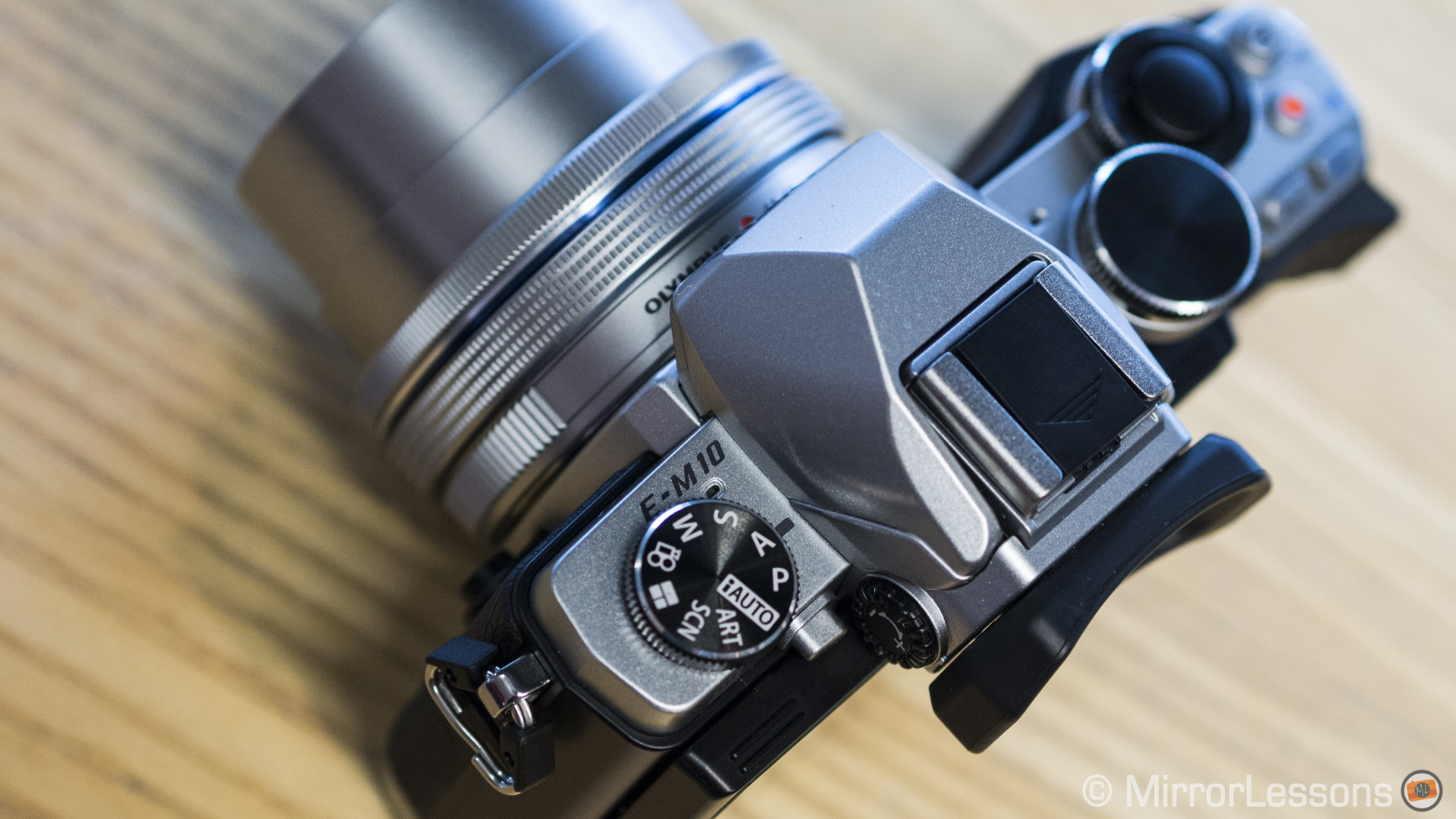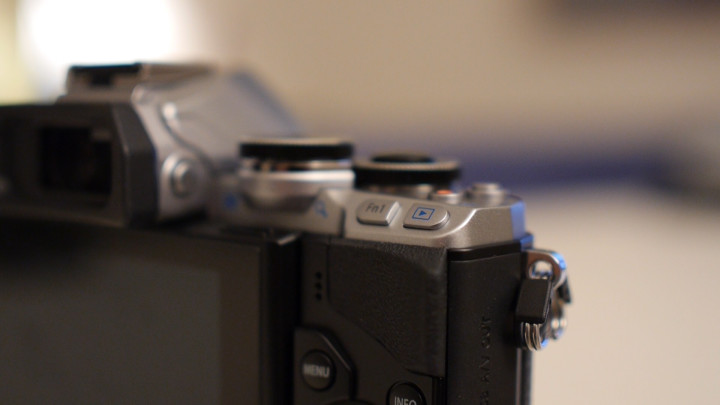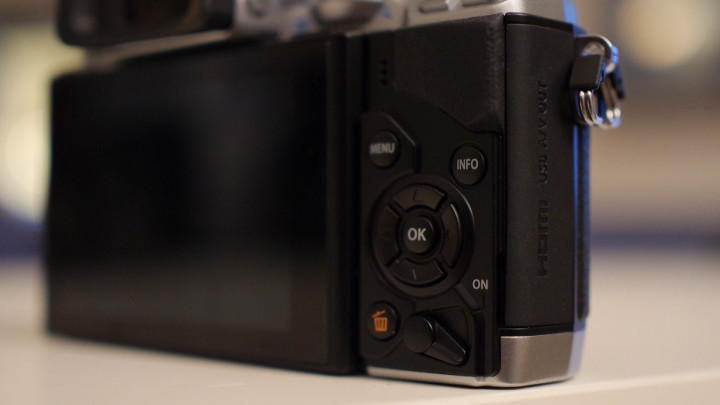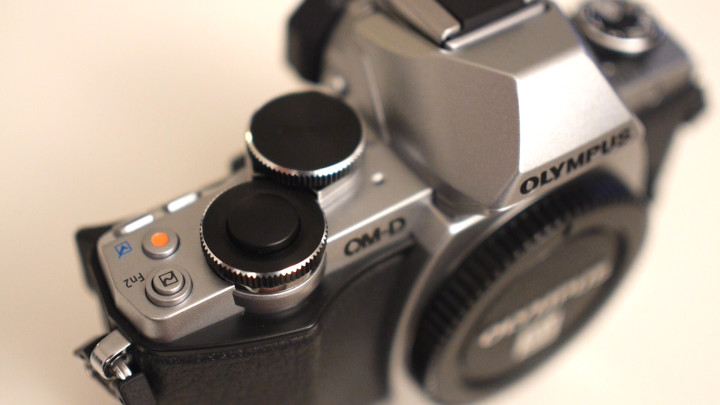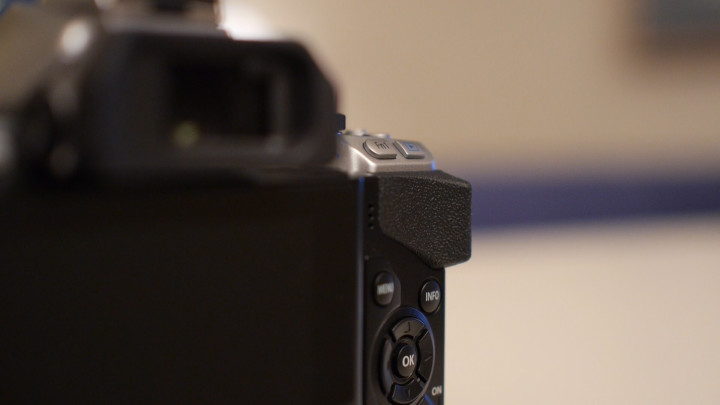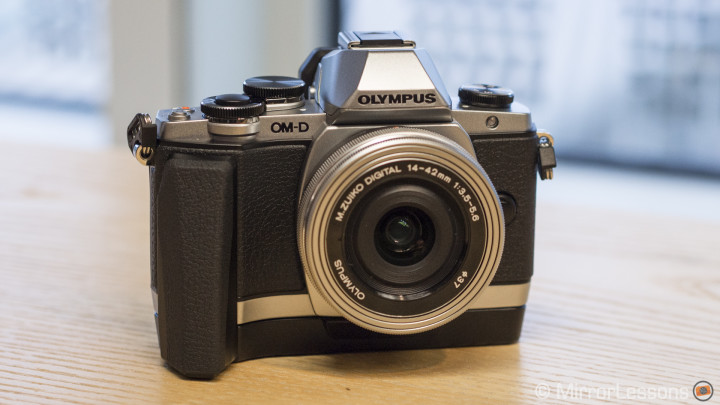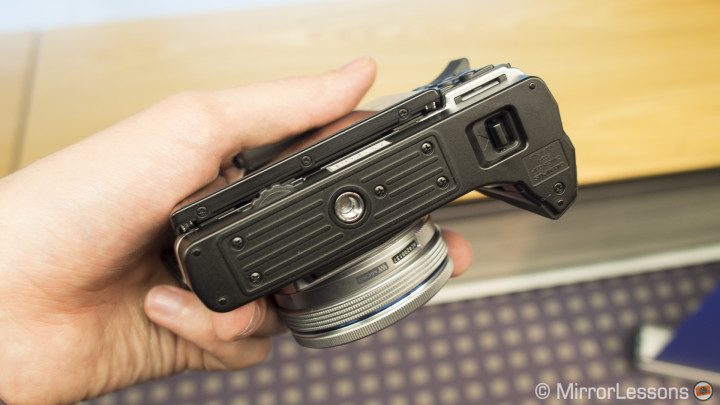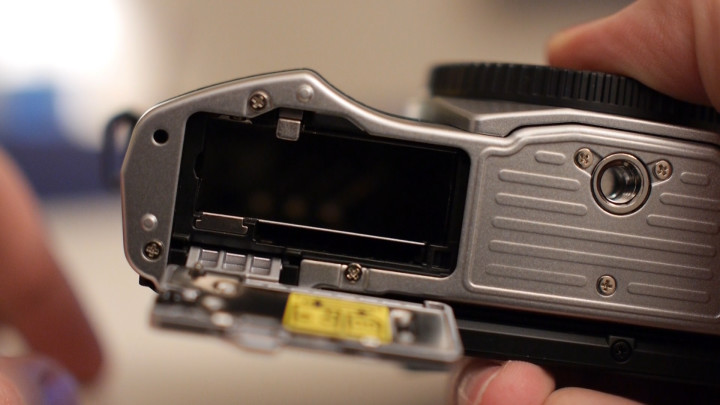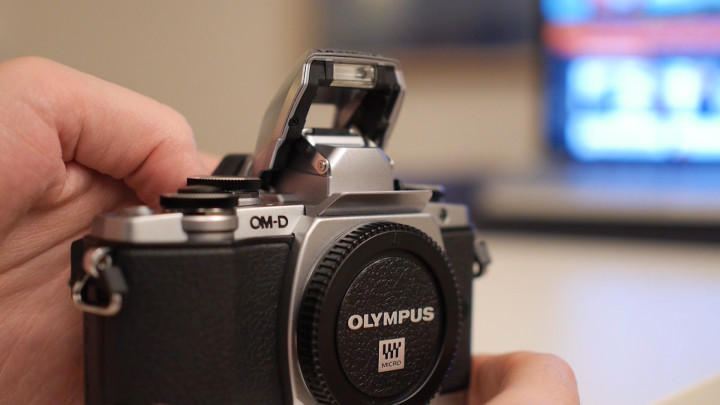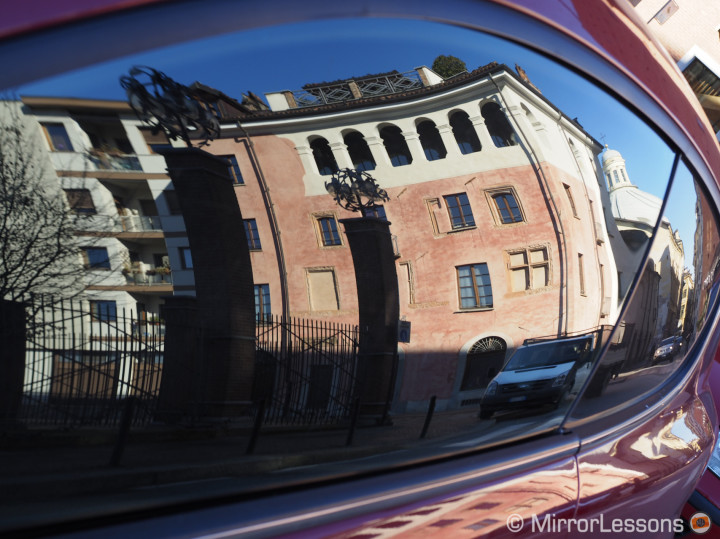Today, Olympus announced the new OM-D E-M10, a new Micro Four Thirds camera that finds its place beside the OM-D E-M5 and the OM-D E-M1. Yes, you read that correctly, the new E-M10 is NOT the E-M5 replacement but an entry-level model that is positioned below the E-M5. Not only does this marketing choice raise many interesting questions, but it also confirms the willingness of Olympus to expand and push the OM-D camera line.
We’ve been testing the camera for five days now, which Olympus kindly sent us along with the new Olympus 25mm f1.8 and 14-42mm f/3.5-5.6 pancake zoom lens. Here are our initial thoughts about these new and exciting products following our first days of testing.
OM-D E-M1 Main Specs
- Sensor: 16 megapixel 4/3 Live MOS Sensor
- Lens system: Micro Four Thirds interchangeable lens system
- ISO Sensitivity: 200 – 25600 ISO (extended 100)
- Continuous shooting: 8 fps (maximum)
- Autofocus: Contrast detection AF with 81 focus points
- Internal Stabilisation: Yes (3 axis image stabilisation)
- Viewfinder: Electronic, approx. 1.440K dots and 100% FOV
- LCD Screen: Tilting 3″ LCD touch monitor
- Movie recording: Full HD up to 30p (CHECK)
- Weatherproof: No
- Dust reduction filter: Yes – Supersonic Wave Filter
- Built-in Flash: Yes
- Extra Features: Built-in WiFi, Art Filters, Live Composite
- Weight: 519g (including battery and memory card)
N.B.: all the images in this article are OOC JPGs with the vidid profile.


Entry level or E-M5 twin? Well actually…
To begin, let’s delve into the most obvious comparisons. The E-M10 is clearly inferior to the flagship E-M1. The only three things that the cameras share are the the touch screen LCD, TruePic VII processor and the 81 contrast detection AF target areas. The E-M10 lacks phase detection capabilities but it is correct to say that it share the same contrast detection AF system as the E-M1.
There are also three features on the E-M10 which neither the E-M5 nor the E-M1 possess:
- A new Live Composite mode, which goes a step further than the Live Bulb/Time mode. It gives you the ability to take several long exposure shots at a regular interval of time and merge them into a single final image. Without going into further detail for now, it basically allows you to do an in-camera star trail photograph for example.
- A more advanced WiFi functionality that allows you to use your smartphone as a remote trigger, while adjusting all the settings on the camera directly. This is something that apparently many photographers asked for. Unfortunately, it won’t be possible to implement this feature into the E-M1 via firmware update because the E-M10 has a different WiFi hardware than the E-M1.
- A built-in EVF with a shorter latency
Now that the main differences between the E-M1 and E-M10 are clear, let’s compare the new camera with the E-M5. Here things get a little bit more complicated.
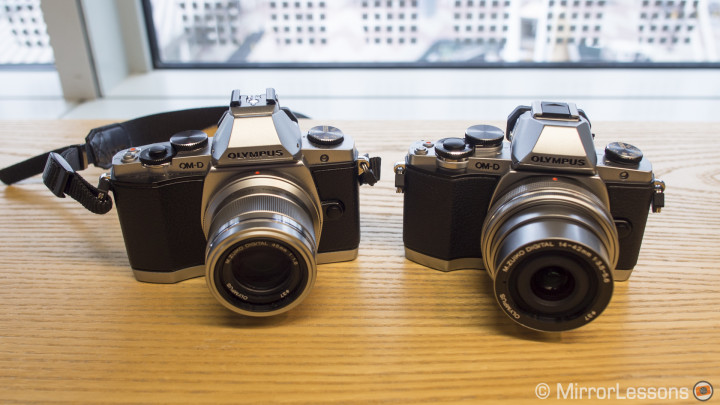
What the E-M10 and E-M5 share:
- The same 16mp Live Mos Sensor
- Contrast detection AF
- Same EVF resolution (1,440,000-dot)
Strengths of the E-M5 in comparison to the E-M10:
- 5 axis stabilisation: the E-M10 IS only works on three axes (it lacks the vertical and horizontal shift axes, more on that later)
- slightly faster continuous shooting mode (9fps on the E-M5 vs. 8 fps on the E-M10 in AF-S mode)
- weather-sealed body: the E-M10 body is not weather sealed.
Strengths of the E-M10 in comparison to the E-M5:
- A newer image processor (True Pic VII instead of VI)
- No AA filter
- 81 AF target areas (E-M5 has 35 target areas)
- Advanced WiFi capabilities
- A higher speed rate mode for the EVF (120 fps) with Adaptive Brightness Technology (same as the E-M1) and shorter latency
- An improved button layout
- A built-in flash
Now that the main differences have been explained, let’s go back and analyse the new features of the OM-D E-M10 and the most important differences between it and the two other OM-D cameras.
Subtle improvements in a smaller package
Design and Ergonomics
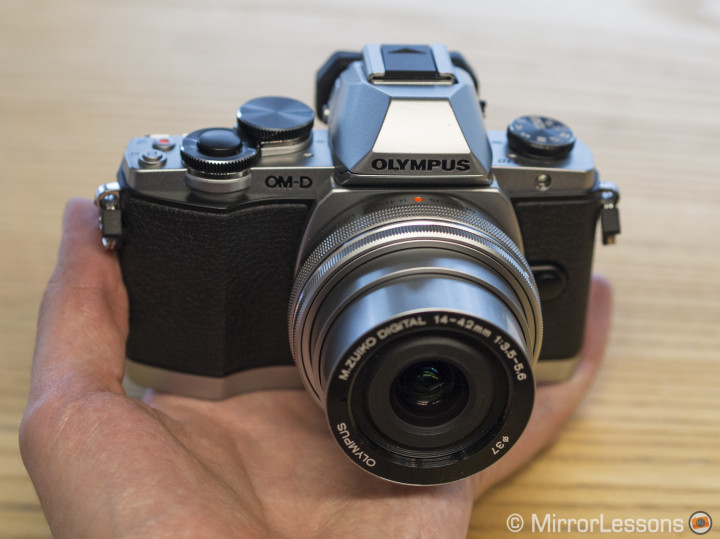
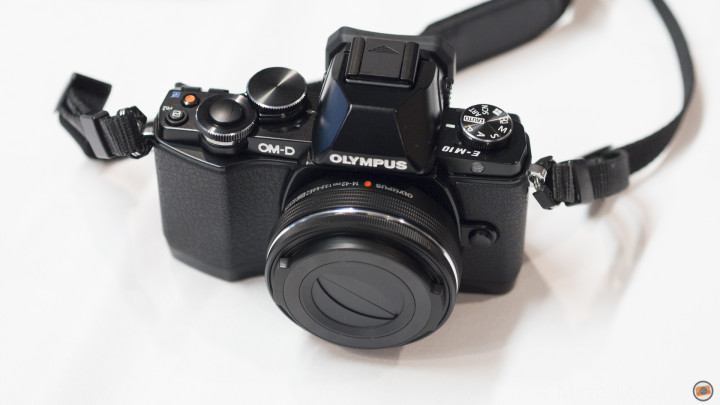
The OM-D E-M10 is slightly smaller than the E-M5 and has a more refined button layout on the rear. Some very minor improvements have been made to the main dials on top and to the overall grip of the camera. Despite the body being slightly smaller, I found the ergonomics and grip very similar to the E-M5. But the improvements to button design and the dials make it nicer to use.
Below you can check out our hands-on video with the camera, where we also show how it differs from the E-M5.
To summarise what is explained in the video, you can also check out a gallery below where we highlight the key differences in each image caption.
New high-speed EVF
While the E-M10 EVF shares the same size and resolution as the one built into the E-M5 (1,440,000-dot), it’s performance is better and also has some unique characteristics. First, it shares the same Adaptive Brightness Technology found on the E-M1. This means that it can reproduce dark and bright scenes more accurately by automatically adjusting its brightness. As a result, it is more natural to adapt to the human eye.
So far, I think that EVF works well but I did notice that it had a tendency to show a more exposed image than the actual result.
However, the newest feature is its high speed capabilities: when enabled in the menu, the new high speed mode brings the frame rate up to 120 fps, which shortens the latency between the scene and what you see in the viewfinder. At 120 fps, the time lag is a mere 0.0007s.
During the first days of use, I noticed that this was particularly beneficial when shooting in low-light conditions, especially when panning, as the images remain clearer and crisper. It doesn’t give you the impression of slow shutter speed you often notice when using an EVF in low-light conditions. But there is a catch: in high-speed mode, there is also a loss of resolution. Olympus doesn’t state how much resolution the EVF loses. So far, I haven’t noticed anything drastic.
I can also presume that boosting the speed of the EVF might shorten the battery life but I cannot confirm this just yet.
3-axis stabilisation

Be sure to check out our comparison between the E-M10’s 3 axis stabilisation and the E-M5’s 5 axis stabilisation!
One of the characteristics that makes OM-D cameras unique is their internal stabilisation, called 5-axis stabilisation. The sensor is literally “floating” and the camera compensates for micro shakes by moving on five different axes (pitching, yawing, rolling, horizontal and vertical shift).
On the OM-D E-M1, I managed to expose shots at 1 second and 1 second and a half and take perfectly sharp images (you can read more about that here).
On the OM-D E-M10, however, Olympus chose to include only three axes. The E-M10 lacks the horizontal and vertical shift. Olympus explains this choice by stating that the smaller body of the E-M1 required some modification in the hardware but the lack of two axes is compensated by the addition of electronic image stabilisation.
My first impression is that I do feel a difference in comparison to the E-M5 or the E-M1. I must say that I’ve become so confident in the 5-axis stabilisation that I was a little bit surprised at first when I saw that some of my slow shutter speed photos (1/20s, 1/10s) were slightly blurry. I do feel that with the E-M10, its “safe shutter speed” is faster than the one you can set on the E-M1. This may seem obvious as we are talking about two different stabilisation systems. After investigating a little bit more, I found that most of the time, if I take two shots in a row, the first will be slightly blurry while the second will be perfectly sharp.
Below you can see a quick example that summarise my thoughts (click on the photos to open them at their full resolution)
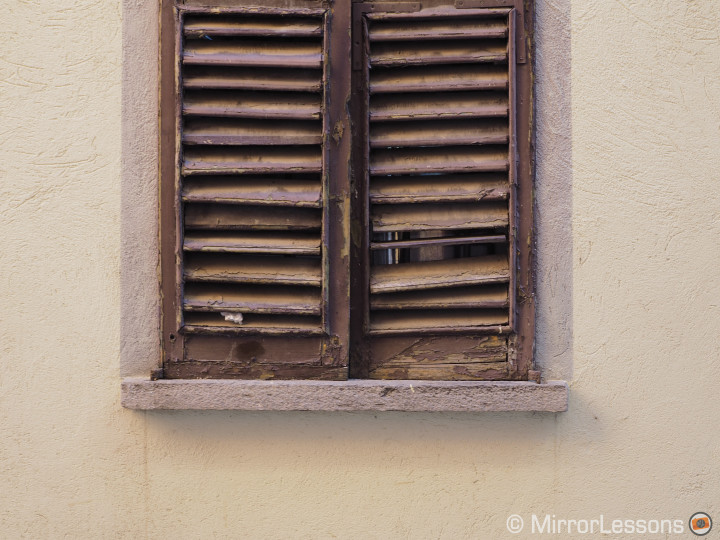
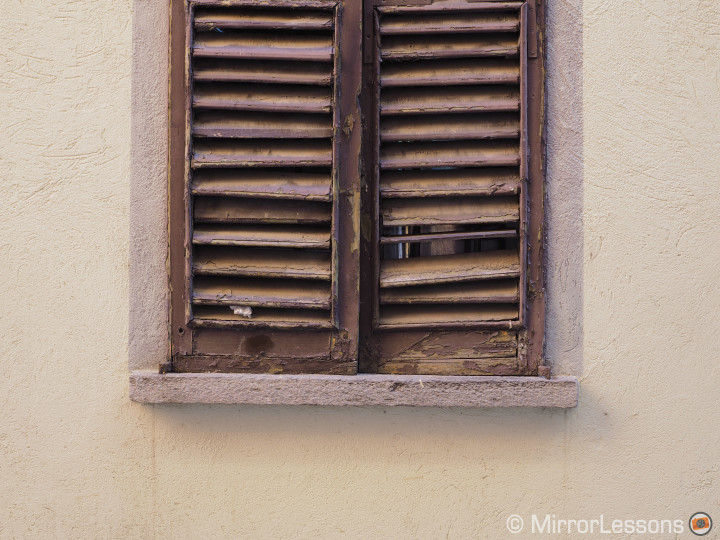
I need to perform more tests before reaching any conclusion as there are certainly various elements influencing the result. Olympus states that there is a noticeable difference only for hand-held macro shots, so I will try that as well.
But if I forget the E-M5 or E-M1 for a second, and use the camera from the point of view of a new user, the initial results of the stabilisation are certainly more than positive.
Performance and other important features
Of course, I haven’t tested everything yet. During the first few days with a new camera, I like using it in a very instinctive way, without thinking too much about every aspect to test and check. Rather, I simply enjoy the hunt for a nice scene to capture.
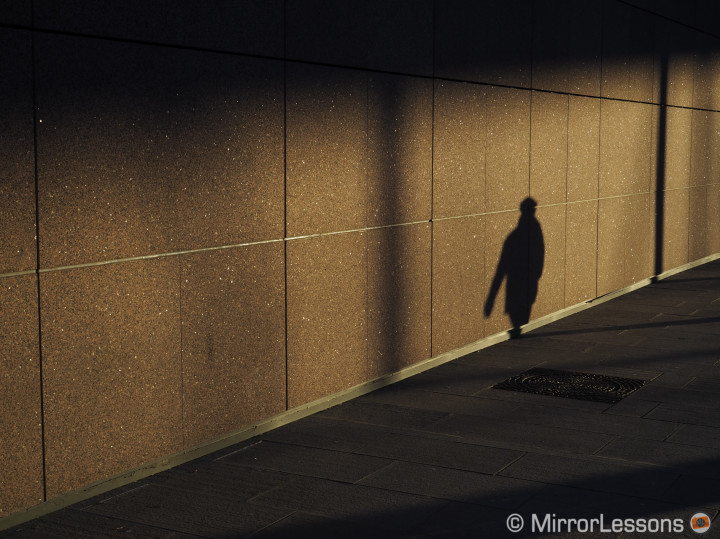
The immediate discovery that some of the features like overall speed and autofocus accuracy behave exactly like the other models makes me feel that, in a way, the camera is already familiar to me when it comes to its performance. As such, I haven’t felt driven to check how AF behaves because from day one, I’ve been able to say with confidence, “Yes, that’s an OM-D!”.
One of the features I am most curious to test but will require some time to perform is the new composite live mode. One of the most notable features of OM-D cameras is the Live Bulb function where the camera gives you a preview of a long exposure shot while the shutter is open. This new function allows you to merge several different long exposure shots taken at a specified interval of time. In the official product shots, you can see that Olympus shows a star trail photograph on the LCD screen and this is the most obvious example of a result you can achieve with this function.
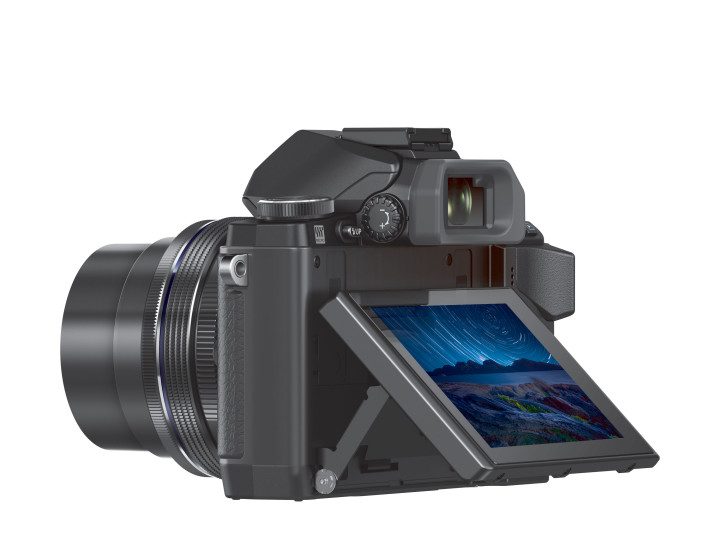
Star trails usually require you to process and merge the different shots via software on the computer. The possibility to do it on-camera is certainly intriguing and since I’ve never tried to make star trail photographs before, this is certainly a great excuse to start. 😉
Another worthwhile feature is the enhanced WiFi function. You can manually control the camera via the official app on your smartphone or tablet device. With the new pancake zoom lens, which has an electronic zoom, you can also change the focal length via the device.
Finally, Olympus also added a functionality where the smartphone becomes a wireless camera trigger. Usually when you activate the WiFi function on a digital camera, you can only control it from the device. In this case, you control each setting on the camera but take the shot from the smartphone to avoid any micro-shakes when pressing the shutter release button.
OM-D E-M10 image quality samples

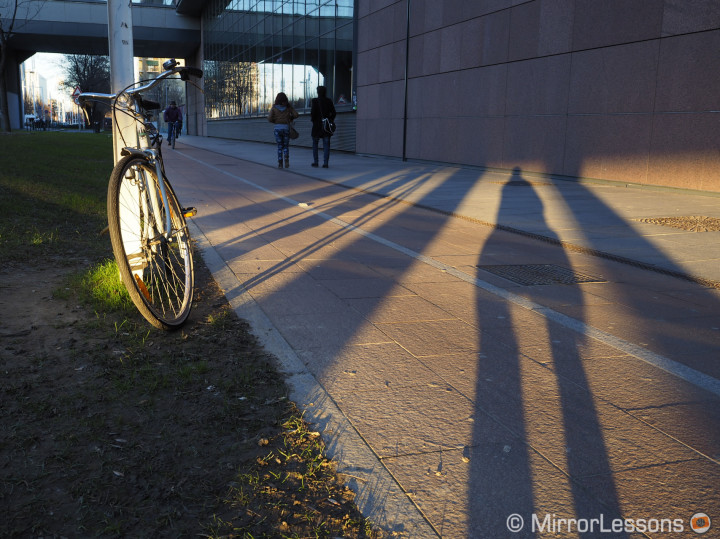

I won’t talk about overall image quality for now. This is a first impression article and I’d prefer to talk about it in the final review. The E-M10 has the same sensor as the E-M5 so I expect that it will share the same image quality, and the first samples I’ve taken with the camera seem to confirm the obvious. I will dig further to see if the E-M1 processor adds something to it. In the meantime, here is a gallery of sample images. Enjoy!
The new M.Zuiko 25mm f/1.8
Along with the E-M10, Olympus has also launched two new lenses. One of them is a focal length that was missing among the primes, and that is the M.Zuiko 25mm f/1.8 (50mm equivalent of 35mm format).
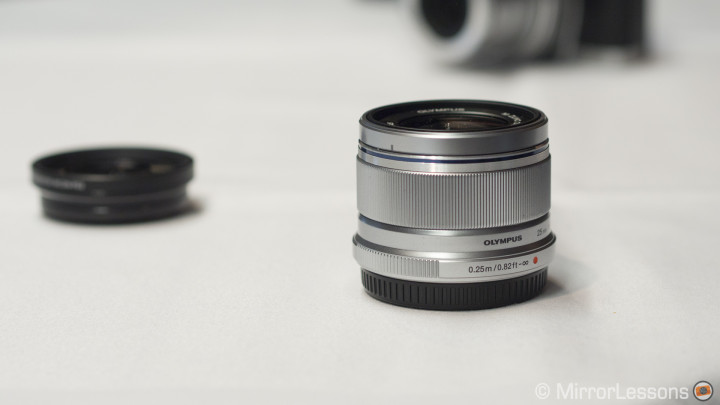
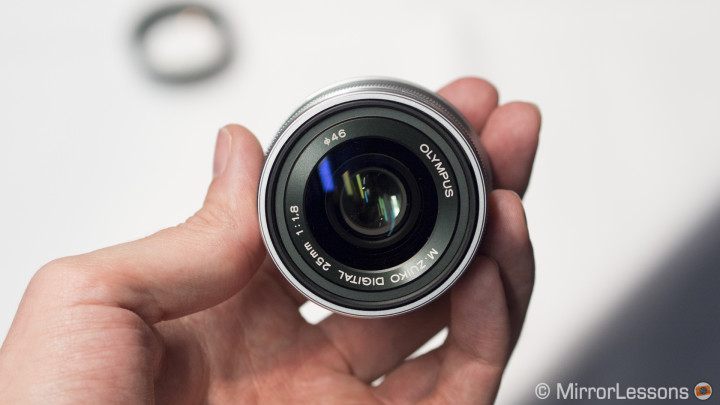
The new M.Zuiko 25mm f/1.8 completes the set of fast 1.8 primes and has the same build quality as the 45mm f/1.8, which means it is made of plastic on the outside. Just like the 45mm, the build feels very solid. If you have seen the video at the beginning of the article, you will have also breathed a sigh of relief upon hearing that Olympus has finally decided to include a lens hood with the lens.
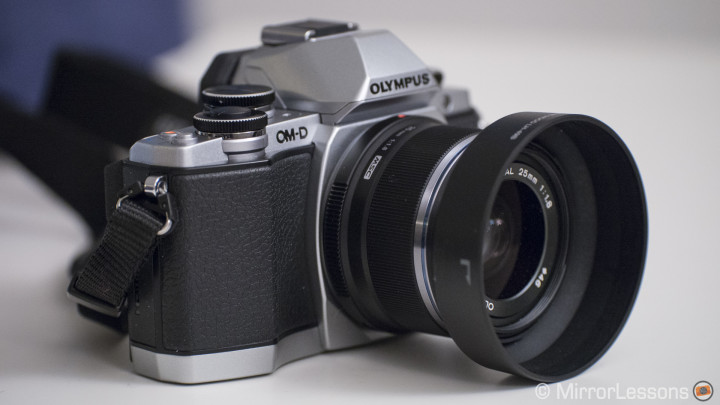
But how is the performance of this new lens? Well, I cannot give you complete feedback yet but the first impressions are very positive. Especially at its fastest aperture, the lens gives excellent results in terms of sharpness.


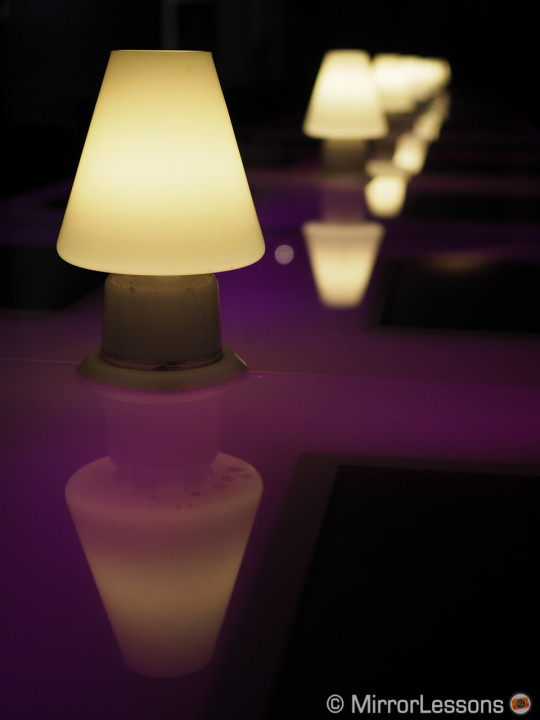
The lens contains 9 elements in 7 groups (like the Lumix Leica 25mm 1.4) but only the rear group of lenses moves for the focus, which generates better results according to Olympus. The front lens is concave so that enough light can hit the image corners. Two aspherical lenses positioned in the middle reduce the risk of spherical and chromatic aberration. Finally, the lenses have a Zero Coating treatment to reduce flare and ghosting.


The only thing I noticed is that if you are facing direct sunlight, the lens can generate a huge purple flare. This is something that I’ve seen many times on Micro Four Thirds sensors with different lenses (both wide angle and middle telephoto) but I was surprised to see that amount of purple flare on the 25mm.

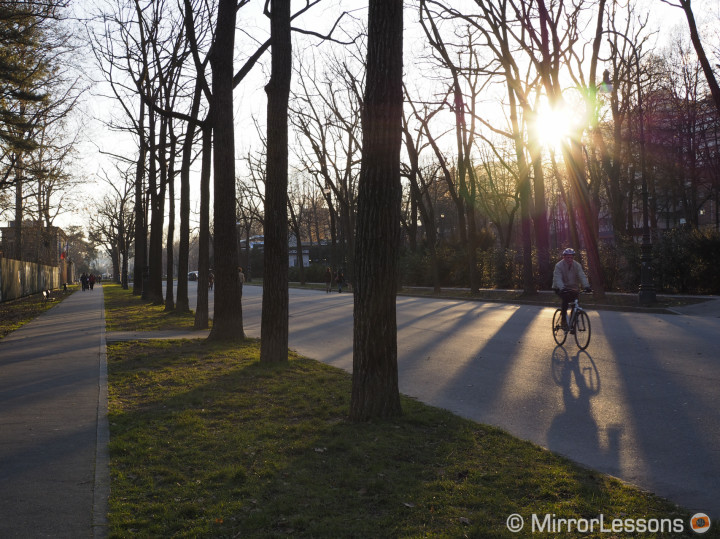

However, this seems to be related to a specific angle at which the light rays enter the lens. After a few test shots, I found that if I slightly tilt the camera up or down (a matter of millimetres really), the purple flare disappears and you get what I would call a normal lens flare.
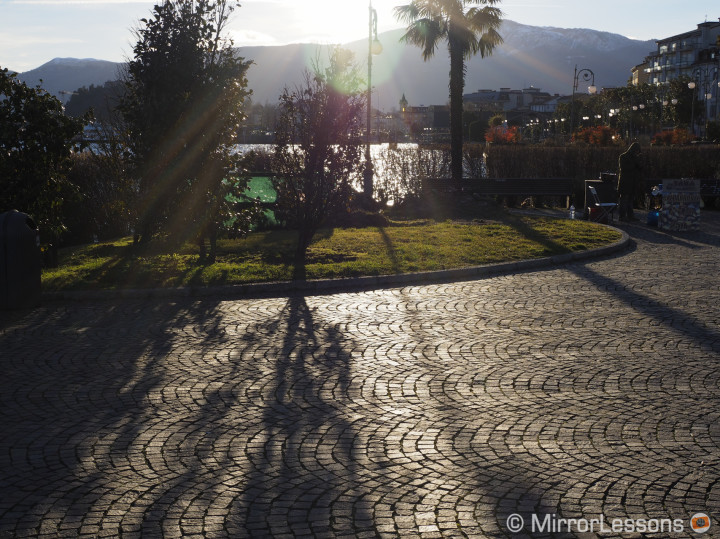
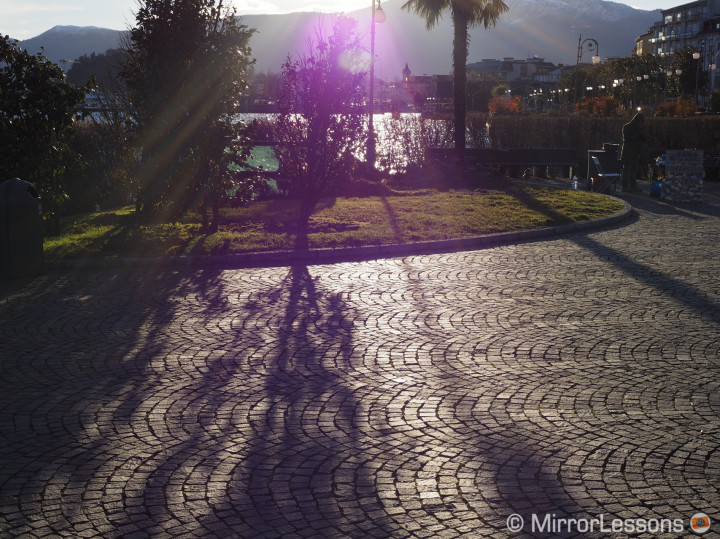
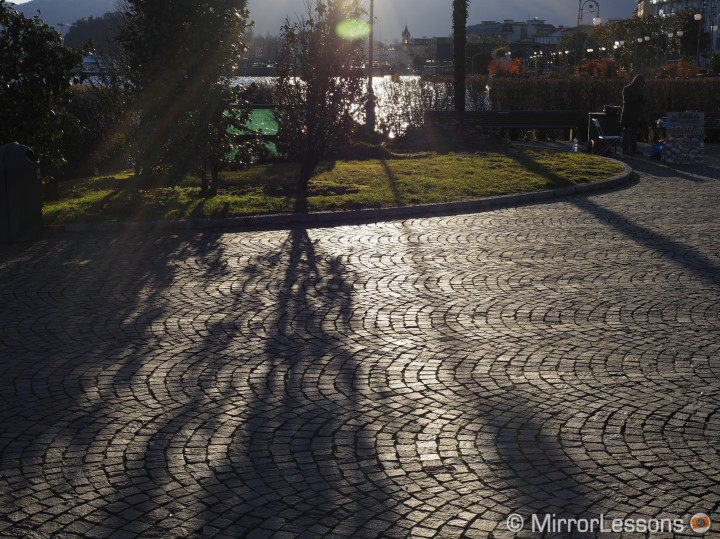
In the end, this doesn’t seem to be a major issue but it must be kept in mind when you want to take that kind of shot. As for everything else, it really seems to be a lens that shares the same quality found in the other M.Zuiko prime lenses.
The new M.Zuiko 14-42mm f/3.5-5.6
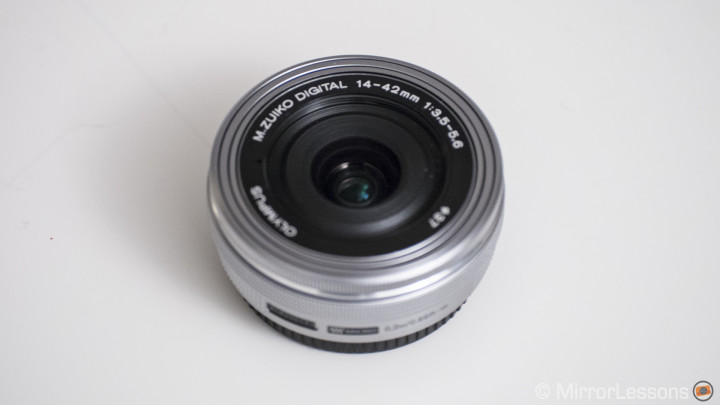
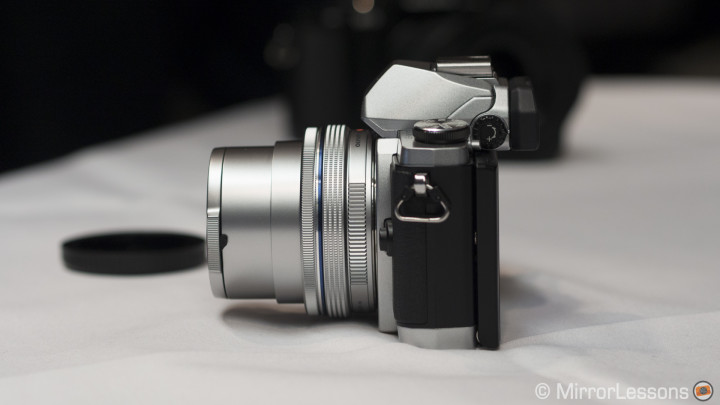
I admit I was a little skeptical at beginning about the M.Zuiko 14-42mm f/3.5-5.6. I usually don’t like electronic zoom controls and I thought it would make the sensation too similar to that of point-and-shoot cameras but I was wrong. It is quiet nice to use actually.
By slightly turning the zoom ring to the left or right, you zoom in or zoom out. Three different speed can be selected in the menu but none are as fast as controlling a zoom ring manually. The build quality is good and the mount is made of metal.
The image quality isn’t bad at all for a kit lens and it can also take the prize for the world’s thinnest zoom lens on the market (thinner than the Lumix version released with the GM1).
The lens automatically expands when you turn the camera on. Furthermore, Olympus is releasing a new lens cap that you can attach to the zoom, which automatically opens and closes when the camera is powered on or off. This is actually the aspect I like the most because I don’t have to worry about putting the lens cap in my pocket or in my bag.
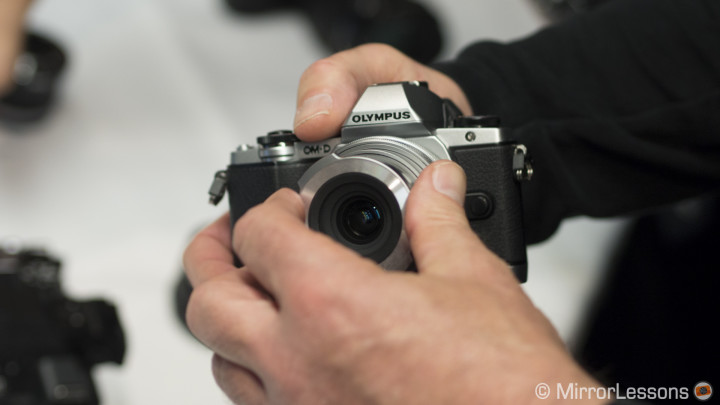
The new lens cap is meant to be screwed onto the lens so there is no risk of losing it either. The only downside is that it isn’t included in the package; you have it to purchase it separately. I honestly don’t understand this choice, also because this is currently the only electronic zoom lens by Olympus out there. It would have been a great thing to have it included in the box.
The OM-D E-M5 gets a tiny restyling…
As I said, the E-M5 will continue to be sold and there is actually a new black edition of the camera coming out with the M.Zuiko Pro 12-40mm f/2.8. In that kit, the E-M5 will be an updated version with new dials similar to the ones on the E-M10, a leather texture grip and a grainy paint on the body that can hide scratches and scars better. I know, there is nothing particularly exciting here also because this “E-M5 II” will only be sold with the Pro lens and the price will be €1499.
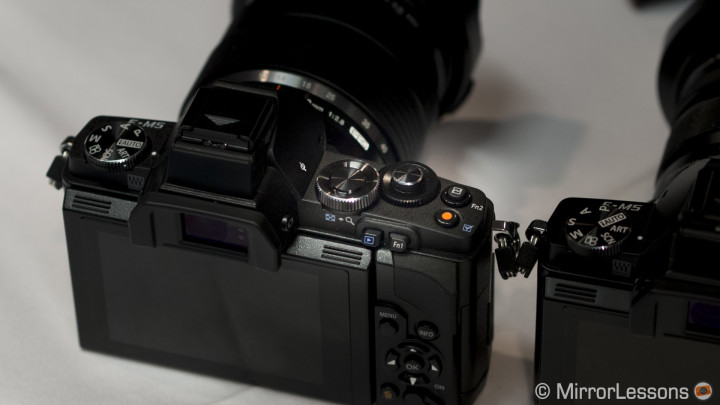
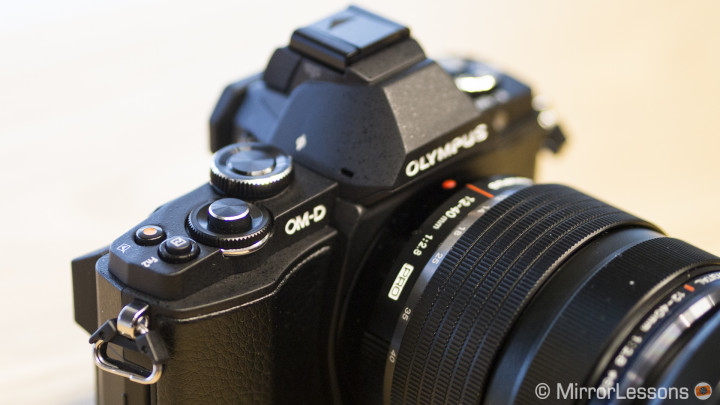
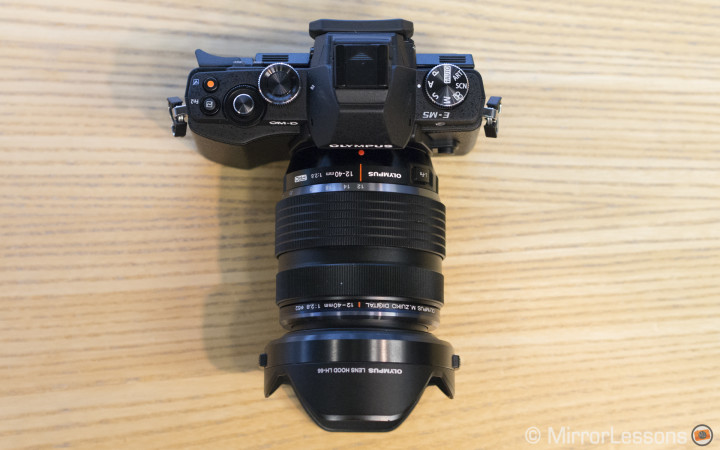
The good news is that the “classic” E-M5 will receive a firmware update that adds small AF target points and the extended ISO Low setting that you can find on the E-M10. The “E-M5 II” will already have these two features.
Conclusion
That’s it for now. The OM-D E-M10 is certainly an interesting new camera. I like the willingness of Olympus to expand the OM-D line, as it has received many positive reviews from photographers. This is certainly being triggered by the fact that OM-D cameras are selling well in Europe and North America and that the E-M1 has been such a success so far.
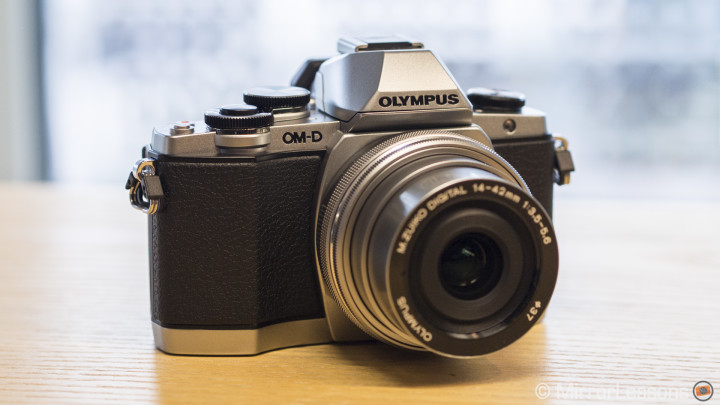
The feeling when using the E-M10 during these first days has been great especially from an ergonomic point of view. As a regular E-M5 user, I can confirm that the redesigned button layout and dials make it nicer to use in comparison to the E-M5.
Certainly the E-M1 remains the king of ergonomics and functionality but let’s not forget that it is intended for a different user. The E-M10 is an entry-level camera and aims at amateur photographers.
My only little concern for now is the 3-axis stabilisation. This isn’t related to the overall performance but to the fact that the 5-axis stabilisation has been a flagship feature of OM-D cameras (plus the Pen E-P5) and I can’t help but wonder if this choice, certainly related to the marketing and positioning of the camera, doesn’t make the new E-M10 less unique than its brothers and sisters. Maybe I simply need to forget the E-M5/E-M1 for the following days and use this camera just as a new user would do. Who knows, I might find the 3-axis stabilisation to be fantastic in the end. 😉
One more thing…
As I said at the beginning, we have had the OM-D E-M10 for five days now and we are also preparing the complete review.
This last paragraph is for you, the readers of this article: if you would like to see something specific in the final review or suggest something that we can test or compare, feel free to leave us a note in the comments section below.
If we get enough questions, we will write a dedicated article where we try to answer them all, making it the first Q&A review for our readers. If it works and you appreciate it, we might do this often.
Stay tuned and hit us with your best questions!
